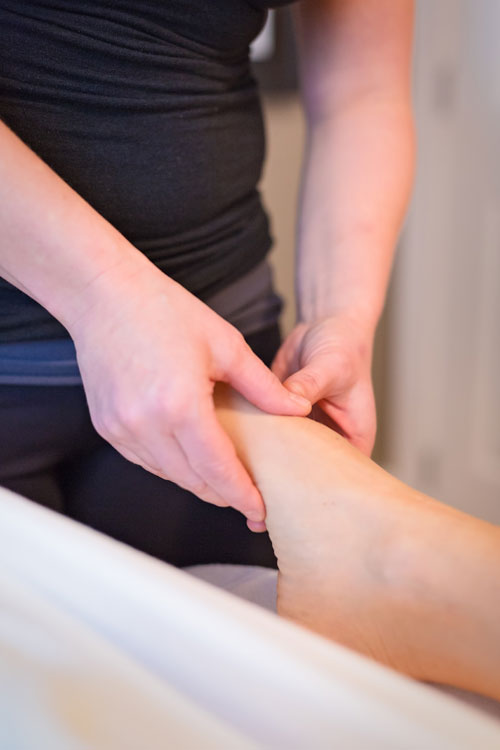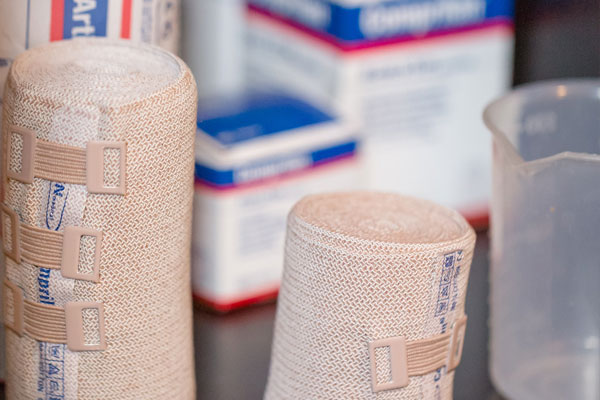
Manual Lymph Drainage
Manual Lymph drainage is a gentle and safe technique that encourages the flow of Lymph fluid in the body. The technique is applied by the therapist with a two directional stretch to the skin ending in a zero phase or complete release of the tissue in a circular motion. This encourages the flow of lymph and the movement of lymph fluid in a desired direction. The technique is also applied in a specific pattern toward deeper drainage sites. Manual lymph drainage is applied in a rhythmic and repetitive motion to aid in the relaxation of the lymph vessels and movement of lymph. Deeper techniques may also be applied to address deeper vessels in muscles and joints.
Although Manual Lymph Drainage is commonly used and possibly most known for the treatment of Lymphedema it is also useful and very beneficial for treating many other conditions. Manual Lymph drainage can be used to treat swelling and congestion from injuries or surgery, can be used for treatment of scars, headaches and migraines, whiplash and concussions, any musculoskeletal conditions, insomnia, and much more. Please see list of conditions manual lymph drainage may be an indication for.


Combined Decongestive Therapy
is considered to be the best and most effective way to treat Lymphedema. The components of combined decongestive therapy include manual lymph drainage, compression, physical exercise, skin care, and education in self-management. There are three phases of treatment:
- An intensive phase that may last 2 weeks to several months, depending on the patient, which involves reduction of the affected area or limb using manual lymph drainage and bandaging.
- A transition phase where a daytime garment is introduced. The person may still require nighttime bandaging.
- A maintenance phase that includes skin care, compression, exercise and MLD when needed.
Indications for Manual Lymph Drainage
(Note: some conditions may fall into more than one category)
Musculoskeletal
- Sprains and Strains (ankle)
- Fractures
- Carpal tunnel
- Thoracic outlet
- Piriformis syndrome / sciatica
Head and Neck
- Torticollis (wry neck)
- Tension headaches
- Migraines
- Concussions
Joint Dysfunctions
Temporal Mandibular Joint (TMJ)
Osteoarthritis (knee, hip)
Bursitis
Tendonitis
Adhesive capsulitis of the shoulder joint
Neurological Disorders
- Concussions
- Migraines/ headaches
- Trigeminal Neuralgia
- Multiple Sclerosis
- Strokes
Trauma
- Hematomas
- Meniscus Tears
- Whiplash
- Complex Regional Pain Syndrome
Skin
- Sunburn
- Eczema
- Stretch marks
- Shingles
- Acne
- Rosacea
- Psoriasis
Respiratory:
- Asthma
- Bronchitis
- Chronic Sinusitis
Pre/post natal
- Swelling in hands and feet
- Breast tenderness
- Pre-breast massage to encourage breastfeeding and post to help with tenderness and mastitis without infection.
- Postpartum depression
Eyes and ears
- Tinnitus (ringing in ears)
- Detached retina
- Traumatic injury to the eye
Digestive system
- Constipation
- Bloating
- Stress
Edemas
- Lymphedema
- Venous edema (venous insufficiency)
- Post surgical
Pre and Post Surgical
Receiving manual lymph drainage before surgery can help to decrease the symptoms and swelling experienced post surgery. Post surgery manual lymph drainage is again useful to decrease swelling but can also be useful in reducing pain, minimizing scar tissue formation, and assisting in the healing process.
Manual lymph drainage can help to alleviate pain by removing chemicals in the body produced during the inflammatory process that irritate the nerves. By removing these chemicals and decreasing pain experienced, it also helps to break the pain cycle by reducing the pain signals being sent to the brain.
